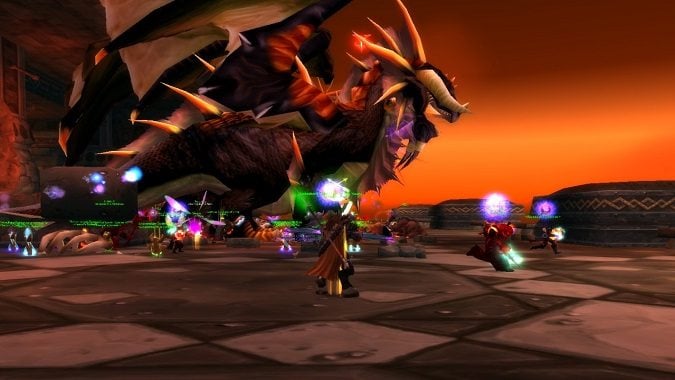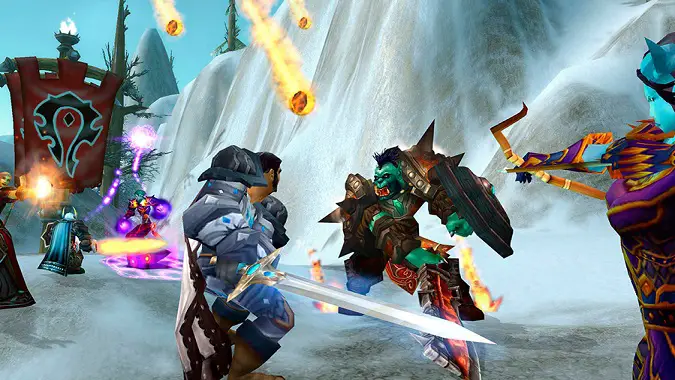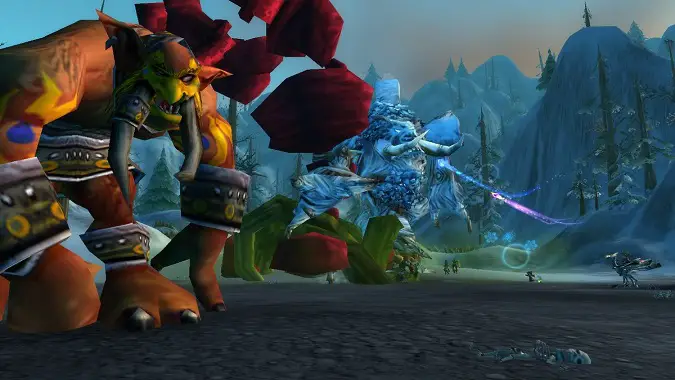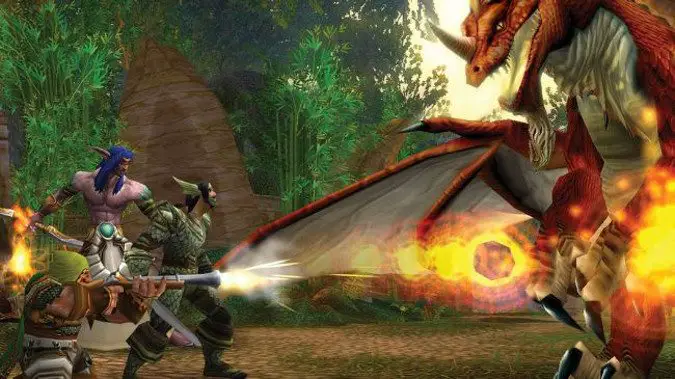My WoW Classic will never be your WoW Classic

World of Warcraft launched in North America and Australia on November 23, 2004. It launched in the EU on February 11, 2005. The first expansion for the game, The Burning Crusade, launched in the EU and NA on January 16, 2007, and on the 17th in Australia, as well as on January 15th in Asia. This was before the days of simultaneous worldwide releases for expansions, as we saw in Battle for Azeroth. So for a little more than two years, World of Warcraft was updating, adding new content, patching and hotfixing and changing, and the game you remember will depend greatly on when and how you were playing it during that time. By definition, WoW Classic cannot entirely recapture that game, because that game was a changing, growing, dynamic one and it was chock full of errors and mistakes that won’t be present this time around.

The Valley never stayed the same
CM Kaivax recently posted to the forums a clarification about where they’re heading in terms of the design of Alterac Valley in WoW Classic. I immediately found myself thinking about the battleground and how it changed between June of 2005 and that last patch, 1.12.0, the one WoW Classic is being built around. That patch came out over a year later, in August of 2006.
This is a subject that has been asked about several times recently, and we want to clarify some of the details surrounding it. Like many aspects of the game, Alterac Valley was tuned and adjusted in different ways from patch to patch in 2005-2006.
First and foremost, we’re planning to use the 1.12 version of Alterac Valley. For many parts of the game like this, we’re picking an original WoW patch that gives us the most clarity for WoW: Classic, and 1.12 is that patch.
In Alterac Valley, that puts us before the introduction of reinforcements. It puts us before the removal of all of the Commanders and Lieutenants. The only win conditions are the killing of Drek’thar in Frostwolf Keep or Vanndar Stormpike in Dun Baldar.
It gives us several early improvements to the BG that we’re glad to have in place. Early on in AV, there were too many NPCs and they were too hard to kill. By 1.12, many had been removed and NPC health was brought down to a reasonable level. Turning in armor scraps is an encouraged, supportive activity by this point. Many capture points (mostly graveyards) had been moved away from their initial placements to gain better balance across the map. Korak the Bloodrager was removed, and killing opposing players no longer drops items like Dwarf Spines, Orc Teeth, or Human Bone Chips. Gross.
In our content plan update, we mentioned that we’re still working out exactly how and when PvP elements of Classic will roll out. We’ll update you on that here very soon.
Which AV did you play?
If you were a big PVP player in early 2005, you played an almost completely different AV experience, and it changed several times over that year between patch 1.5 and patch 1.12. How different was it? Graveyards were in different places. NPC’s were more common and much harder to kill. Korrak the Bloodrager controlled the central graveyard respawn point and waxed and waned in strength until his removal in patch 1.10, two patches before 1.12 came out. If you were a big World of Warcraft player in 2005 but didn’t play much in 2006, or focused more on PVE than PVP at certain points, you may have had a radically different experience. I remember AV as me zoning in to a fight that had been in progress for an indeterminate amount of time and eventually leaving after an hour or two, with no sign that either faction was ever going to win. That’s not how AV felt if you zoned in a year or so later, because many decisions had been made to adjust the tuning and encourage games to actually end.
We look back at those original days and forget that the game was, much as it is now, a game in constant flux. WoW Classic has the unenviable job of somehow trying to create the same sensation in a player who stopped playing in August of 2005, another who quit in early January of 2007 just before The Burning Crusade, and a third player who played right up from the time WoW dropped until that expansion pack added new zones, races and levels. Those three players remember Budapest… I mean, Alterac very differently.
I’m not opposed to the approach Kaivax outlines above. I think to a certain degree it’s inevitable that WoW Classic has to decide which version of the game to show us. Is it going to give us Molten Core with the original models for items, or the updated items that the raid used for most of its existence? Decisions have to be made, and patch 1.12 is the final, ultimate version of the game before The Burning Crusade launched. It makes sense to use it.
A snapshot of a river
In a lot of ways WoW Classic reminds me of photographs of natural places, in that it isn’t and can’t ever really be what those things actually are. At most, they can give you a sense of what the things they represent were like at the moment the snapshot was taken. But just like when you take a picture of a river, the game you’re trying to snapshot has already long since moved on — WoW Classic isn’t, and can’t be, what Vanilla WoW was like. It can do a remarkable job of reproducing it, certainly. But it won’t ever be that exact game at that exact time played by those exact people again.
That’s not a criticism or a complaint, it’s just the inevitable fact. Even if Blizzard chose to release WoW Classic at the very first patch, and released each successive patch and game change exactly on schedule to reproduce how they came out originally, it’s not the same time period, we don’t have the same players anymore. I can’t imagine Blizzard wanting to reproduce some of the hilariously awful bugs and server crashes we experienced back then, and without them, WoW Classic is not going to feel like Classic WoW actually did. That doesn’t mean it won’t be fun, or worthwhile to play. In fact, it may be more fun for you, depending on when you played and what your experiences were originally. But it won’t be the same because it can’t be the same — choices and decisions affecting the gameplay have to be made, and a version of the game has to be presented to us for us to experience now, in 2019 or later. We’re looking at a game that started life fifteen years ago, and the most recent patch we’ll be experiencing is still more than fourteen years old.
World of Warcraft changed, and grew, and no one knew what it was going to turn into down the road. Now, going back, we can very much see all that context that didn’t exist yet — we are, for better and for worse, essentially visiting this recreation with all that context coming along with us. Blizzard’s decision on how to present Alterac Valley is just one of many such decisions they’ll have to make, because they simply can’t turn back time and release the game again.
Please consider supporting our Patreon!
Join the Discussion
Blizzard Watch is a safe space for all readers. By leaving comments on this site you agree to follow our commenting and community guidelines.
 @MatthewWRossi
@MatthewWRossi





